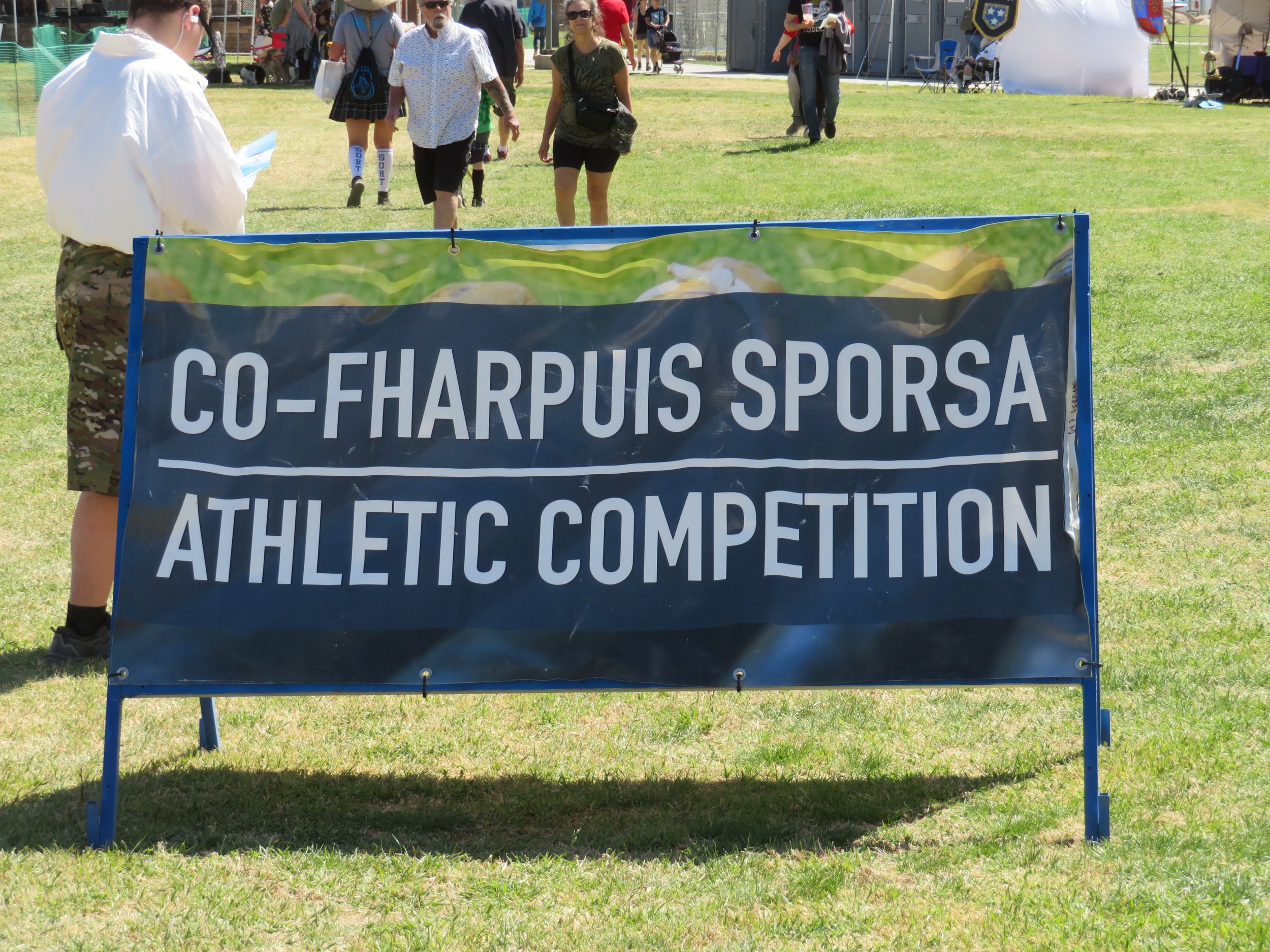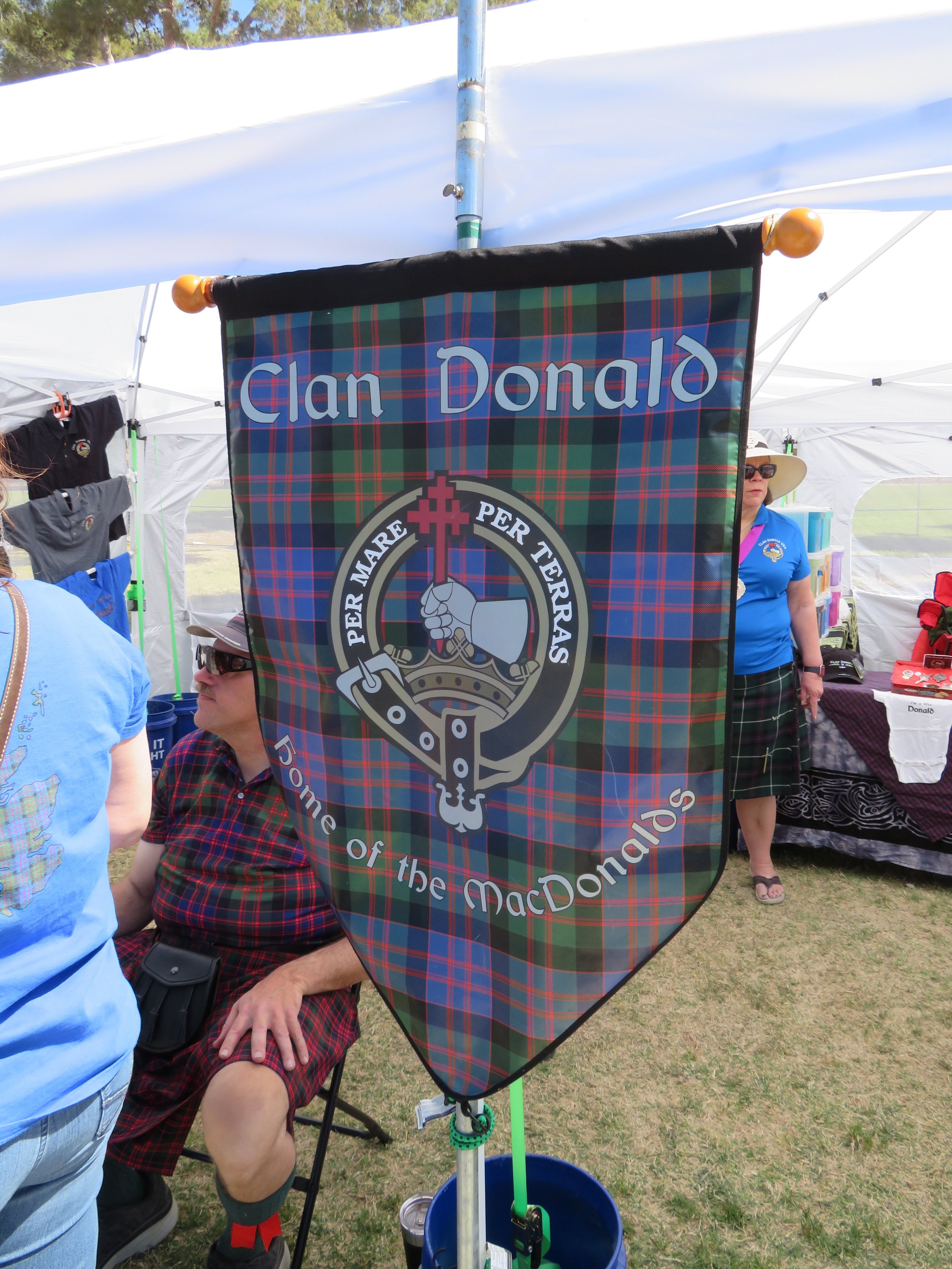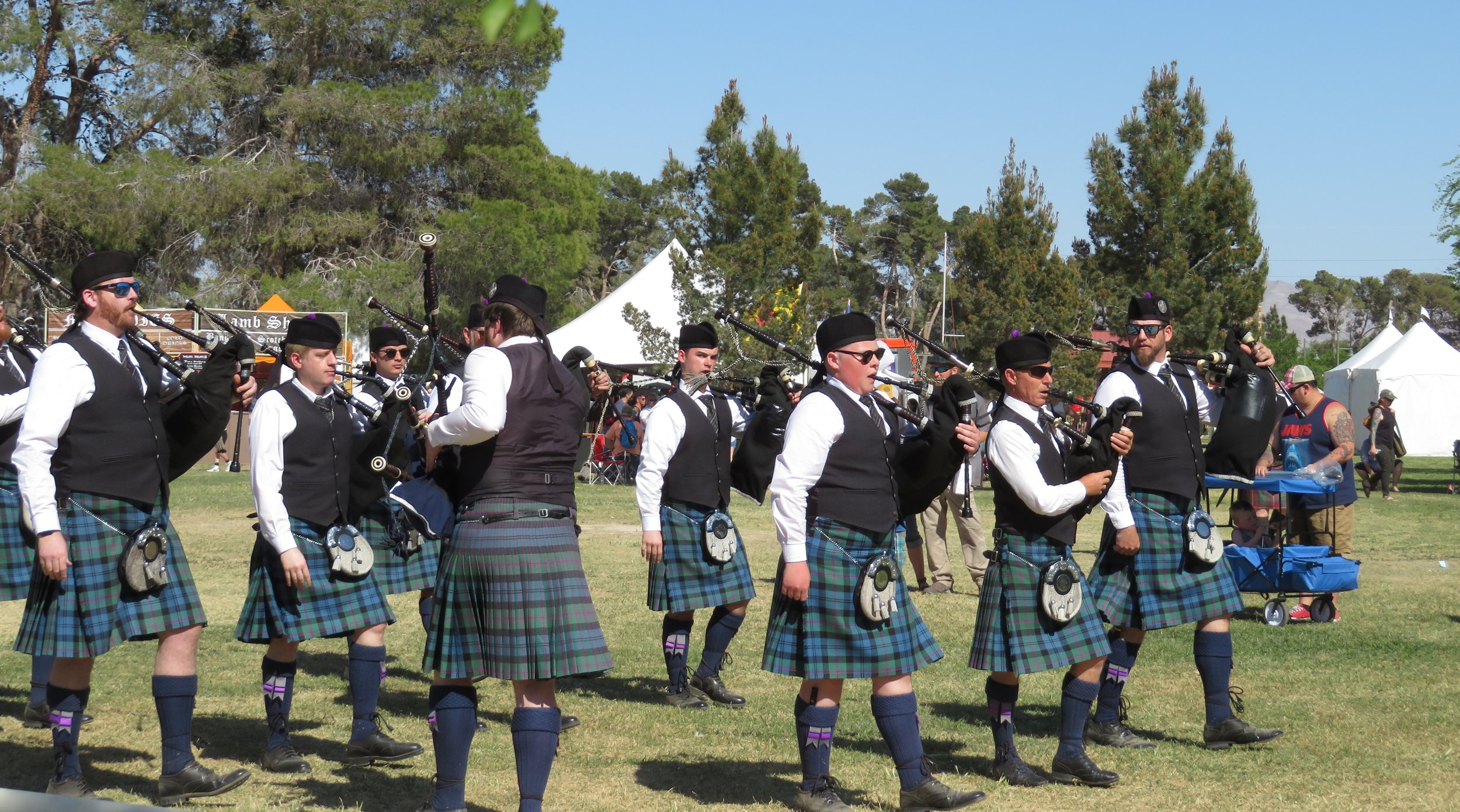High on the Las Vegas Highland Games
/T’is the season of fairs and festivals and we’re taking in our share. After whooping it up at the Clark County Fair and Rodeo recently, we also had the opportunity to attend the 2023 Las Vegas Celtic Gathering and Highland Games. We last attended these traditional Scottish games when we were in New Zealand and really enjoyed the spectacle. We were hoping Las Vegas’ Celtic ‘gathering’ would be just as much fun with its Heavy Athletics, Highland Dancing, and Bagpiping competitions. It’s a great way to soak up some Celtic/Scottish culture.
‘Heavy Athletics’… hmm… a most appropriate phrase to describe traditional Highland games events most of which involve ‘heavy’ stuff like the caber toss, the hammer throw, and the stone put among others. I had a chance to brush up a bit (or learn anew) about the different events which made watching them all the more fun.
According to the Cottages & Castles website, “Highland Games in one form or another, have been around for over 1000 years. According to oral tradition, similar gatherings have been taking place amongst Celtic tribes since before the dawn of Christianity, and in these times were designed to select the clan’s best and strongest warriors. The first Highland Games in Scotland to be designated as an official sporting event are recorded as having taken place in the 11th century, during the reign of King Malcolm III. He staged a royal contest to find the fastest and strongest who could act as his messengers.”
Games continued to be held throughout Scotland over the following centuries until 1746, when the English enforced the Act of Proscription which outlawed a number of Scottish traditions including the Highland Games, playing the bagpipes, and wearing kilts, all of which were punishable by death. It took several decades for the act to be repealed, but towards the end of the 18th century, Highland Games commenced once again.
As we walked from the parking lot to the Craig Ranch Park venue site, the bellowing skirl of bagpipes wafted through the air. Kilted folk were everywhere… men, women, kids, and even dogs sported their tartan clan colors.
Kilts are an important part of the Scottish tradition, and are still a key symbol of Scottish culture. Kilts were on sale, along with all their associated accessories and regalia… sporran pouches, pins, belts, buckles, brooches, braces and even special kilt shoes and hose. Kilts also feature heavily in the Highland Games. Rules set out by the Scottish Highland Games Association require that participants in open heavy events wear kilts while competing.
The day was gorgeous… sunny and bright with a blue sky and a slight breeze. We strolled the grounds first to get our bearings. Clans each had their own booths with representatives more than willing to provide information and background on their history, traditional tartans, name variants and coat of arms. Our surname, Lynn, is of Irish, English and/or Scottish origin. We learned that Lynn was part of Clan Donald… David’s grandmother’s maternal uncles’ surname was MacDonald. The prefix “Mac” or “Mc” denotes ‘son of’ in Gaelic. Of course, I’m Scottish/Irish only by marriage being from fine Canadian French stock, but I recently learned that my great-grandmother’s maiden name was MacDonald. Yikes… we’re all related!
Lifting and balancing the caber is a feat in itself.
The games had begun in a huge field area cordoned off from bystanders. We joined the crowd to watch the caber toss… without a doubt the most difficult event. Competitors must toss a 20-foot-long caber as far as possible. The caber, a log that looks the size of a telephone pole, normally weighs around 150lb. The athlete not only has to toss the caber, but he has to balance it n his hands and perform a run-up before the toss.
Caber Toss… like launching a telephone pole!
Next was the stone put… akin to the shot put but athletes instead throw a stone, weighing around 18lb. Each competitor has three tries to launch the stone as far as possible.
We watched hammer throwing and women competing in the weight for distance event, but next to the caber toss, the sheaf toss was our favorite game to watch. The sheaf is a burlap-wrapped compact bale of straw weighing about 20 pounds. Brawny contestants spear the sheaf with a pitchfork and attempt to toss it vertically up and over a bar. Each contestant has three tries to get it over the bar. Successful contestants advance and the bar is raised a foot. The winner was nationally acclaimed sheaf tosser, Richard Campbell, who was successful at 26’ and bested his competition.
Young girls, all costumed in traditional garb, took to the stage and danced a lilt in the Highland Dancing competition. Their fancy footwork was impressive. When Highland dancing competitions were first established in the late 19th century, they were open to men only. Today, 95% of competitors are female.
Lunchtime offered all sorts of food vendors offering bangers and smash, lamb shanks, meat pies, fish and chips, roasted turkey drumsticks, and more with Scottish shortbreads and ginger lassies for dessert. Guinness and Harp were on tap and Irish and Scotch whiskey tastings were available, but no haggis was to be seen. Darn… we had to settle for meat pies. Click on the thumbnails to enlarge them.
We found a shady grove of trees under which we munched our pies. The pipe bands were all practicing in this area and the resultant cacophony of sounds was nearly overwhelming as one group practiced pipes and drums on one side of us and another practiced a different tune and rhythm on the other.
On the main festival stage, various Scottish bands performed throughout the day and we stopped to listen to the Wicked Tinkers, a tribal Celtic band playing "all the greatest hits from the 1700s." Bagpipes and drums were the expected band instruments, but the didgeridoo kind of surprised us.
We found a shady spot from which to watch the Pipe and Drum Competitions and settled down in our chairs. Several bands competed, each clad in their tartan kilts and Glengarry hats.
The drum majors were particularly impressive in their full Highland dress complete with ostrich feather bonnet. (Feather bonnet is the correct name for their headwear, but it seems rather inappropriate.) The pipers piped and the drummers drummed to the tune of marches, slow airs, reels, and strathspeys. Our neighboring seatmates were veteran pipers and we learned lots about bagpipes and piping from them.
As the last pipe band marched away, we lugged our chairs back to the car. A most enjoyable day and now back to work on house projects and Blanche so we can begin our new adventure exploring Alaska.


























